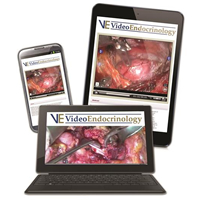Abstract
Background/Objectives
Loss of expression of mismatch repair (MMR) proteins is frequently observed in sebaceous skin lesions and can be a herald for Lynch syndrome. The aim of this study was to identify clinico‐pathological predictors of MMR deficiency in sebaceous neoplasia that could aid dermatologists and pathologists in determining which sebaceous lesions should undergo MMR immunohistochemistry (IHC).
Methods
An audit of sebaceous skin lesions (excluding hyperplasia) where pathologist‐initiated MMR IHC was performed between January 2009 to December 2016 was undertaken from a single pathology practice identifying 928 lesions from 882 individuals. Lesions were further analysed for differences in gender, age at diagnosis, lesion type and anatomic location, stratified by MMR status.
Results
The 882 individuals (67.7% male) had a mean (SD) age of diagnosis of 68.4 ± 13.3 years. Nearly two‐thirds of the lesions were sebaceous adenomas, with 82.6% of all lesions occurring on the head and neck. MMR deficiency, observed in 282 of the 919 lesions (30.7%), was most common in sebaceous adenomas (210/282; 74.5%). MMR‐deficient lesions occurred predominantly on the trunk or limbs (64.7%), compared with 23.2% in head or neck (P < 0.001). Loss of MSH2 and MSH6 protein expression was most frequent pattern of loss (187/281; 66.5%). The highest AUC for discriminating MMR‐deficient sebaceous lesions from MMR‐proficient lesions was observed for the ROC curve based on subgroups defined by type and anatomic location of the sebaceous lesion (AUC = 0.68).
Conclusion
The best combination of measured clinico‐pathological features achieved only modest positive predictive values, sensitivity and specificity for identifying MMR‐deficient sebaceous skin lesions.
https://ift.tt/2AILtBf

